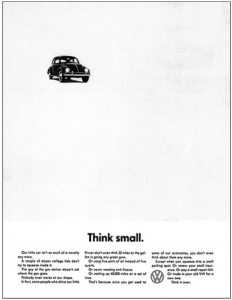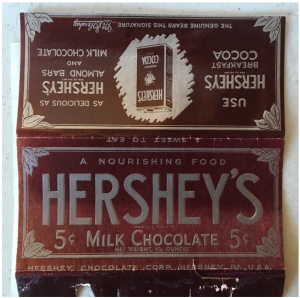Marketing During Recession [6 Key Principles]
“Cutting the marketing budget during a recession is like taking off one wheel of the car when the gas is low”
In the face of an impending recession, marketing managers and CMOs can learn valuable lessons from the early recession periods.
By adopting and adapting these strategies to the current economic climate, marketers can help their companies emerge from the upcoming recession in a stronger and more competitive position.
The bottom line of marketing during recessions and hard times is to keep and even increase branding and marketing activity.
Table of Contents
Marketing & Recession
The Harvard Business Review article from 2010, Roaring Out of Recession, emphasizes that a recession can be a time of opportunity for companies that are willing to take bold action and make strategic investments. By focusing on preserving cash, investing selectively, and being prepared for the recovery, businesses can position themselves to emerge from the recession stronger than ever. All these actions need great marketing efforts to accompany these efforts.
An example given in the article is Target. During the 2000 recession, Target increased its marketing and sales expenditures by 20% over pre-recession levels.
This resulted in a 40% increase in sales and a 50% increase in profits over the course of the recession (with other measures also taken). Profit margins increased from 9% before the recession to 10% afterward.
In their article from 2014, The Role of Advertising during Recession, Prof. Dr. Ayşen Akyüz and Dr. Mustafa Ercilasun mentioned that “In a recession, the first things that a company usually cuts come from the advertising budget. When companies begin to cut back on advertising during an economic downturn, they become less visible to the public. While it make sense to cut off from communication budget, the evidence shows that the companies which advertise during an economic downturn, have expanded their market share and have maintained their solid image. Therefore according to marketers, neglecting marketing efforts during an economic downturn will result in weakening the brand and making it less profitable in the long run.”
Many other studies have been conducted, all of which pointed in the same direction:
- During the Great Depression of the 1930s, the most successful companies increased their marketing budgets while some of their competitors cut back. This allowed them to gain market share and build relationships with customers, even during a period of economic distress.
- Malik PIMS reported in 2001 that increased marketing and research and development spending is associated with business success during downturns.
- During the 2008 financial crisis, companies that successfully navigated the recession were able to prioritize their marketing budgets, focus on ROI-driven marketing, and stay flexible in the face of changing consumer behavior. A 2008 study by Millward Brown showed that 60% of brands that turned dark (no TV advertising for six months) saw brand use decline by 24% and brand image decline by 28%. More than that, brands that cut their ad budget at a higher rate relative to their competitors were at greater risk of share loss.
- In 2020, after Coronavirus, Kantar estimated that brands going dark will experience a 39% decrease in brand awareness and a delayed recovery.
In times of economic downturn, companies often face the difficult challenge of cutting costs while still maintaining sales and revenue. Marketing during a recession is a complex task that requires a strategic approach to ensure that companies remain competitive and emerge from the downturn in a stronger position. In this article, we’ll explore the key strategies and tactics that companies can use for successful recession marketing, drawing on insights from industry experts and data analysis.
How Should Marketing be Carried Out During a Downturn?
1. Targeting Core Customers
“Your best customers are your best investment. Invest in them, and they will invest in you.”
One of the most critical strategies for recession marketing is to focus on core customers. Quelch’s article (How to Market in a Downturn, 2009) notes that “a recession is not the time to be pursuing new, untested markets.” Instead, companies should prioritize their existing customers, who are more likely to stick with them during tough economic times. This may involve offering promotions or incentives to encourage customer loyalty or focusing on personalized marketing messages that speak directly to their needs and pain points.
According to a study by McKinsey, companies that focused on retaining their most loyal customers during the recession had higher sales growth and profit margins in the years that followed. By focusing on their core customers, companies can ensure that they maintain sales and revenue even during challenging times.
Companies can also use data to segment their customer base and create more targeted campaigns. This will ensure that their most valuable customers are receiving the highest priority, together with personalized marketing messages that speak directly to their customers’ rising needs.
2. Prioritize ROI-Driven Marketing
“Marketing is not just about getting attention, but about creating growth. Even in tough times, you can never stop striving for growth.” – Simon Sinek.
Another key aspect of recession marketing is to focus on marketing efforts with a measurable return on investment (ROI). As LinkedIn notes in its blog post, “ROI-driven marketing is more relevant than ever during a recession.” This may involve using digital marketing channels like email and social media, which allow for more precise targeting and tracking of response rates.
Marketing during a recession requires companies to be cost-efficient while still maintaining sales and revenue. According to a study by Nielsen, companies that maintained or increased their advertising spend during the 2008 recession had higher sales and market share growth in the years that followed. By prioritizing ROI-driven marketing, companies can ensure that they are making the most of their marketing spend and achieving measurable results.
3. Maintain a Strong Brand
“A strong brand is the most valuable asset you can have in a recession; it’s the best insurance policy you can buy.” -Seth Godin.
During a recession, maintaining a strong brand is essential for standing out from competitors and building trust with customers. Marketing during a recession requires companies to differentiate themselves from their competitors. According to a study by Millward Brown, companies with strong brands had higher brand value growth during the recession than those with weaker brands. By maintaining a strong brand, companies can build trust with customers and stand out from competitors, even during challenging times.
Quelch also mentions the importance of consistent messaging and high-quality creative materials that emphasize the unique value of your brand as crucial elements.

4. Adapt to Changes in Consumer Behavior
“The only way to survive a change is to grow and adapt with it” – Richard Branson.
Marketing during a recession requires companies to be agile and responsive to changes in consumer behavior. According to a study by McKinsey, companies that responded to changes in customer behavior during the recession had higher sales growth and profit margins in the years that followed. By adapting to changes in consumer behavior, companies can ensure that they continue to meet the needs of their customers even during challenging times.
During a recession, consumer behavior may change in unpredictable ways. For example, consumers may become more price-sensitive or switch to lower-cost brands. Successful recession marketing requires companies to adapt to these changes and find creative ways to meet customer needs.
One fresh example we can see in a study conducted by Microsoft in 2022 is how consumers and businesses change how they look for software solutions.
In Q4 2022, the number of searches for “free trial” increased by 70% compared to the previous year, indicating how businesses and consumers are more price-conscious than ever.
Here’s an example. During the 1930 recession in the United States, Hershey’s ran an advertising campaign that positioned their chocolate bar as a replacement for a meal. This innovative approach allowed Hershey’s to capitalize on changing consumer behavior during the recession and increase sales.

5. Use Effective Marketing Channels.
“What gets measured gets managed.” – Peter Drucker
Not all marketing channels perform equally well during a recession. Traditional advertising channels like television and print may be less effective, while digital channels like search and social media may perform better.
Marketing during a recession requires companies to be strategic in their choice of marketing channels. According to a study by Nielsen, companies that shifted their advertising spend toward more effective channels during the 2008 recession saw better business outcomes. Specifically, companies that shifted their spending towards online and mobile advertising had higher sales and market share growth in the years that followed.
A study from Harvard Business Review found that companies that increased their digital marketing spend during the 2008 recession experienced a 37% increase in sales, compared to a 13% decrease for companies that did not adjust their spending. Additionally, companies that shifted their spending towards online and mobile advertising had higher sales and market share growth in the years that followed. Other studies have shown that companies that shifted their advertising spend towards digital channels, such as search and social media, saw the highest sales and market share growth. Additionally, companies that invested in online and mobile advertising saw an average of 10-20% higher sales growth after the recession.
6. Stay Flexible
“Flexibility is the key to stability; the ability to bend without breaking is a sign of strength.”
Finally, successful recession marketing requires companies to be flexible and willing to adapt to changing circumstances. This may involve reevaluating marketing budgets, revising marketing strategies, and experimenting with various approaches to reaching customers.
Marketing during a recession requires companies to stay nimble and adaptable. According to a study by Marketing Evolution, companies that remained flexible and open to change during the 2008 recession had higher sales growth and profit margins in the years that followed. By staying flexible, companies can weather the storm of a recession and emerge stronger and more competitive than before.
So how can this be done? Companies can demonstrate a flexible strategy by adjusting their marketing budgets and strategies to respond to changing market conditions. They should also experiment with new approaches to reaching potential customers. A key factor is being open to customer feedback, and tracking market changes to adjust their strategies accordingly. Constant market research and analysis are critical to ensure that your marketing strategies remain relevant and effective.
Conclusion
As Prof. Gerard Tellis put it best, “In a recession, companies tend to cut back on advertising and marketing budgets as a cost-saving measure. However, this can be a mistake.
In a recession, consumers become more cautious about their spending and are more likely to do research before making a purchase. This means that companies need to be even more visible and compelling in their advertising and marketing efforts.
Companies should shift their focus from short-term sales to long-term customer loyalty. This means investing in branding, customer service, and relationship-building efforts. By building strong relationships with customers, companies can increase their customer lifetime value and create a loyal customer base that will continue to support them even after the recession ends.”
Marketing during a recession is a complex and challenging task that requires companies to be strategic, focused, and adaptable. By prioritizing core customers, focusing on ROI-driven marketing, maintaining a strong brand, adapting to changes in consumer behavior, using effective marketing channels, and staying flexible, companies can emerge from a downturn in a stronger position. As the data shows, companies that take a strategic approach to recession marketing are more likely to succeed in the long term and come out ahead of their competitors.
Trending Articles
Get exclusive CMO tips that I only share with email subscribers.
Related Articles


